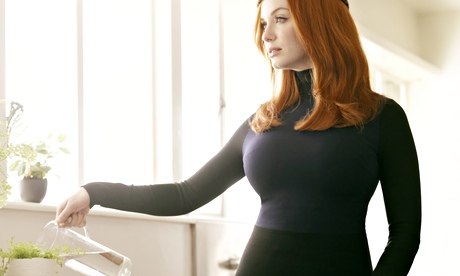
“Being fat isolates and invalidates a woman,” wrote Susie Orbach in 1978’s Fat Is a Feminist Issue. “What is it about the social position of women that leads them to respond to it by getting fat?”
It is an intriguing question, as is the reverse – what drives women to starve themselves into unhealthiness? In one chapter of Curvology, David Bainbridge mulls this point: “The most confusing aspect of eating disorders is why they occur at all – how humans evolved into creatures who could suffer them… no animal evolves specifically to suffer bouts of starvation, bingeing, emaciation, infertility and death.”
A few pages later, though, the best he can come up with is speculating about a “complex set of inbuilt responses” and a “fiendishly complex” relationship between our bodies and our minds. Well, thanks for clearing that up. In the hour I spent reading that I could have eaten a piece of cake, gone jogging to burn it off, and had time to get in a good 10 minutes hating my thighs.
It should be noted that when Bainbridge uses the word “curves”, he means it in the Daily Mail sense – fat. Women have always been fatter than men, even before the foolish invention of the Twix: Bainbridge says the average woman is 27% adipose tissue, compared with 14% for the average man. What distinguishes female humans from other animals, though, is the distinct way our body distributes our padding: no other primate has full-time gazongas, for example. In chimps and gorillas, the mammary glands only swell with pregnancy: the author notes wryly that it is odd for a species to evolve so that many members of it cannot run unsupported without pain.
Bainbridge’s training is in veterinary medicine, and the first part of the book takes a scientific look at how natural selection (survival of the fittest) and sexual selection (survival of the hottest) have moulded female body shape over human history. This section is interspersed with many intriguing statistics. The age of female puberty, for instance, dropped from 15 to 11 during the 20th century, the equivalent of an incredible 12 days a year. We also learn that women’s bodies differ from men’s in surprising ways: our elbows bow out more to the sides if we hold our hands out, palms facing upwards; the arches of our feet are more pronounced; our abdomens are longer, to accommodate a pregnant uterus; and we have more “wedged” vertebrae so we can lean back and counterbalance a bump.
Some of this trivia cries out for further explanation. At one point, Bainbridge notes: “Whereas almost all female animals carry on breeding until they die, women stop producing children during their fifth decade (they would in fact be unique in this respect, had we not discovered that female killer whales do the same thing).” This surely leaves the reader thinking: hang on, did you just say there is such a thing as the Orca menopause? Do they get hot flushes? Is that why they like the Arctic? Sadly, the point is left unexplored.
The author is on secure ground when discussing biology, and these sections will interest an academically minded audience. But culture is an altogether more slippery customer. Bainbridge’s attempt to uncover the factors that influence eating disorders, body image and clothing choices ultimately collapses in a welter of contradictory claims and on-the-other-hand-isms. To compound the misery, the scientific vocabulary that seemed unremarkable when applied to our distant ancestors begins to feel a little disconcerting when used to describe living, breathing women. Take this sentence: “I suggest that the female body-to-be-clothed is best viewed as an interconnected set of globose and cylindrical elements.” This sounds like something a technically minded serial killer would say before chucking you down a well so he can harvest your buttocks for his skinsuit.
Biology evolves slowly; culture changes fast. The most obvious lesson of this book is just how irrelevant the evolutionary pressures that moulded our bodies for thousands of years are to modern life. For those in the developed world at least, food is usually plentiful, childbirth is rarely fatal, and our predilection for monogamous pair-bonds – also known as marriages – is on the wane. Meanwhile, in our frenzied media climate, our bodies are subject to more scrutiny, and invested with more meaning, than ever before. That cave girl might have fended off wild animals and endured famines, but she never had to worry about Heat magazine mocking her cellulite.
The answers offered by this book are both very simple and very complicated. The subtitle promises a disquisition of “the origins and power of female body shape”, and the glib explanations are: women have curves because fat stores increased survival rates, and because heterosexual men like them; those curves have “power” because heterosexual men like them. Why women simultaneously love and hate those curves, desire them and repress them, feel valued and devalued because of them – well, that is another story. There is no perfect female body shape, except the one that you don’t have.
Curvology is published by Portobello, £14.99. Click here to buy it for £11.99

